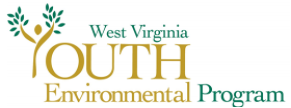Visit the WVDE Science Resource webpage for an extensive list of science resources.
View Resources ❯WVDEP’s Youth Environmental Program
During a typical year, the West Virginia Department of Environmental Protection’s Youth Environmental Program offers in-classroom presentations on subjects like recycling, litter control, water conservation, waste reduction and much more. During the pandemic, we have shifted gears to a virtual platform.

If you are interested in a live or recorded virtual presentation for your students, please contact Tom Aluise at 304-926-0499 (ext. 49753) or Thomas.J.Aluise@wv.gov
New and Improved Water Science School
The U.S. Geological Survey (USGS) is proud to announce a revised Web-based water-science education tool, The USGS Water Science School, where students (of any age) and adults (of any age) can learn all about water, from what it is, to where and how much there is, to the most in-depth discussions of the natural water cycle anywhere. We hope you or your teachers will find it useful in the classroom.
The Water Science School offers several main topic are- Water Basics, Water Properties, Natural Water Cycle (Posters and information in over 60 languages!), Surface Water, Groundwater, Water Quality, Water Use, Activity Center, Photo Galleries, Water Q&A, Teacher Resources, and Water Dictionary. Download our Water Science School Flyer in PDF format here
The Human Element
THE HUMAN ELEMENT, a new environmental documentary from the producers of RACING EXTINCTION, CHASING ICE, and THE COVE, follows renowned photographer James Balog as he meets every day Americans on the front lines of climate change.
About the curriculum: The full film and accompanying lesson plans are available to educators free of charge and aligned to Next Generation Science Standards. The curriculum engages students and teachers in forward-looking dialogue and thoughtful discussions about climate change and its impacts on students’ communities and daily lives. Through compelling scientific and visual evidence, students will learn how the Anthropocene—the current epoch of systemic human change in the environment—is affecting four foundational elements: earth, air, water, and fire.
Who it’s for: The curriculum balances art and science to mirror the film and can be used in either humanities or science classes. Though it was initially built for middle and high schoolers, students of any age can benefit from seeing the film and participating in many of the assignments and discussions contained in the lesson plans.
How to get access to it: Click here to sign up for the curriculum. Once you submit your email, you will receive an automated email with six lesson plans as well as Vimeo links to the full film and shorter clips that you can screen to your students. If you have any questions, please contact THE HUMAN ELEMENT’s impact coordinator, Caroline Beaton, at caroline@earthvisionfilm.com.
Resisting Scientific Misinformation
Developed by science educators in collaboration with PBS NOVA staff at WGBH-TV, this one-week science unit teaches students in grades 6–12 how to evaluate scientific information and distinguish facts from “fake” science. Students identify misleading advertising; create a misleading advertisement based on science; learn appropriate questions to ask to determine a scientific claim’s credibility; and learn about scientific processes, how scientists develop confidence in their conclusions, and the role of scientific and professional organizations in communicating research findings. Designed to be completed within a 45-minute period, lessons incorporate brief narrated videos and include student activities.
